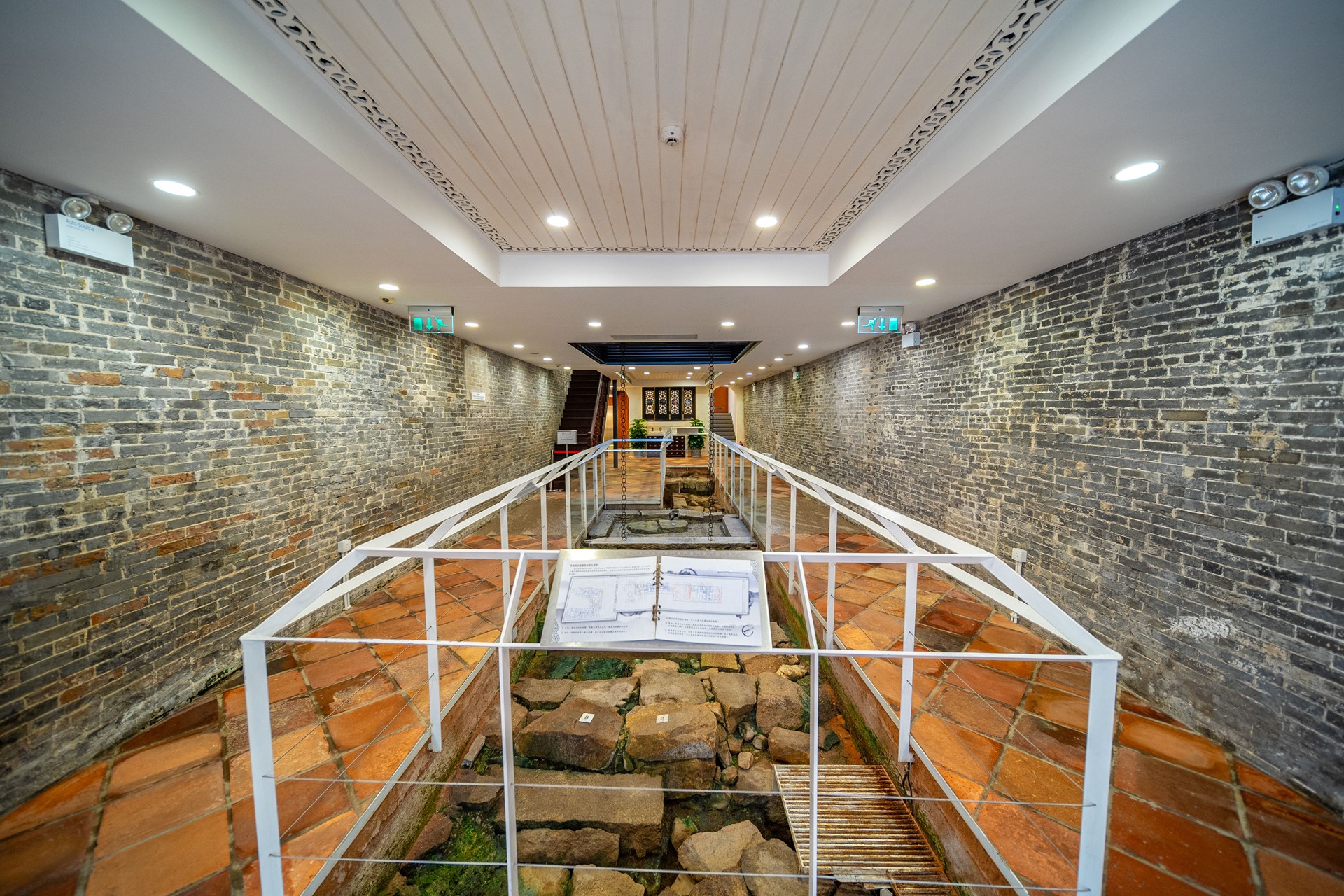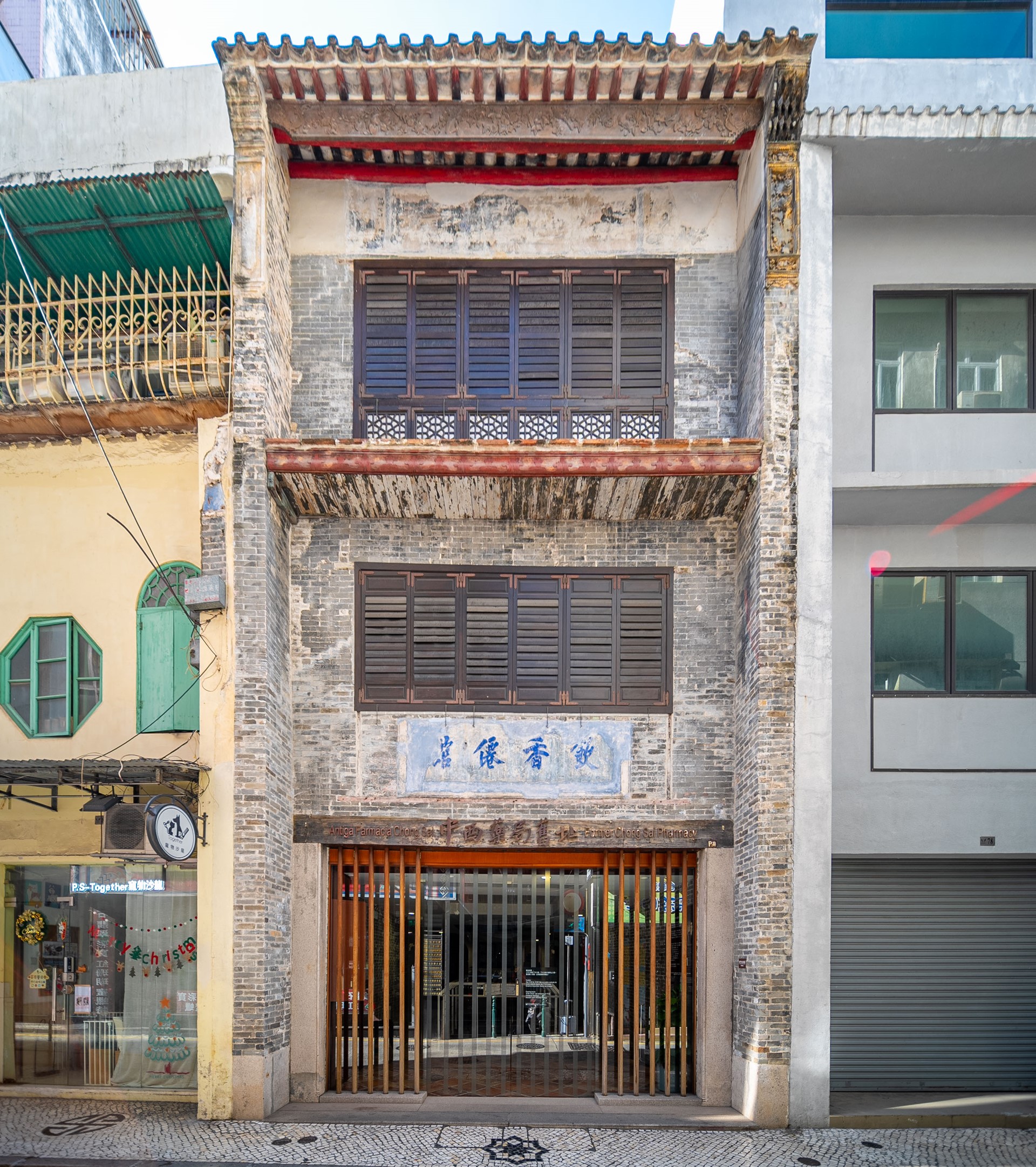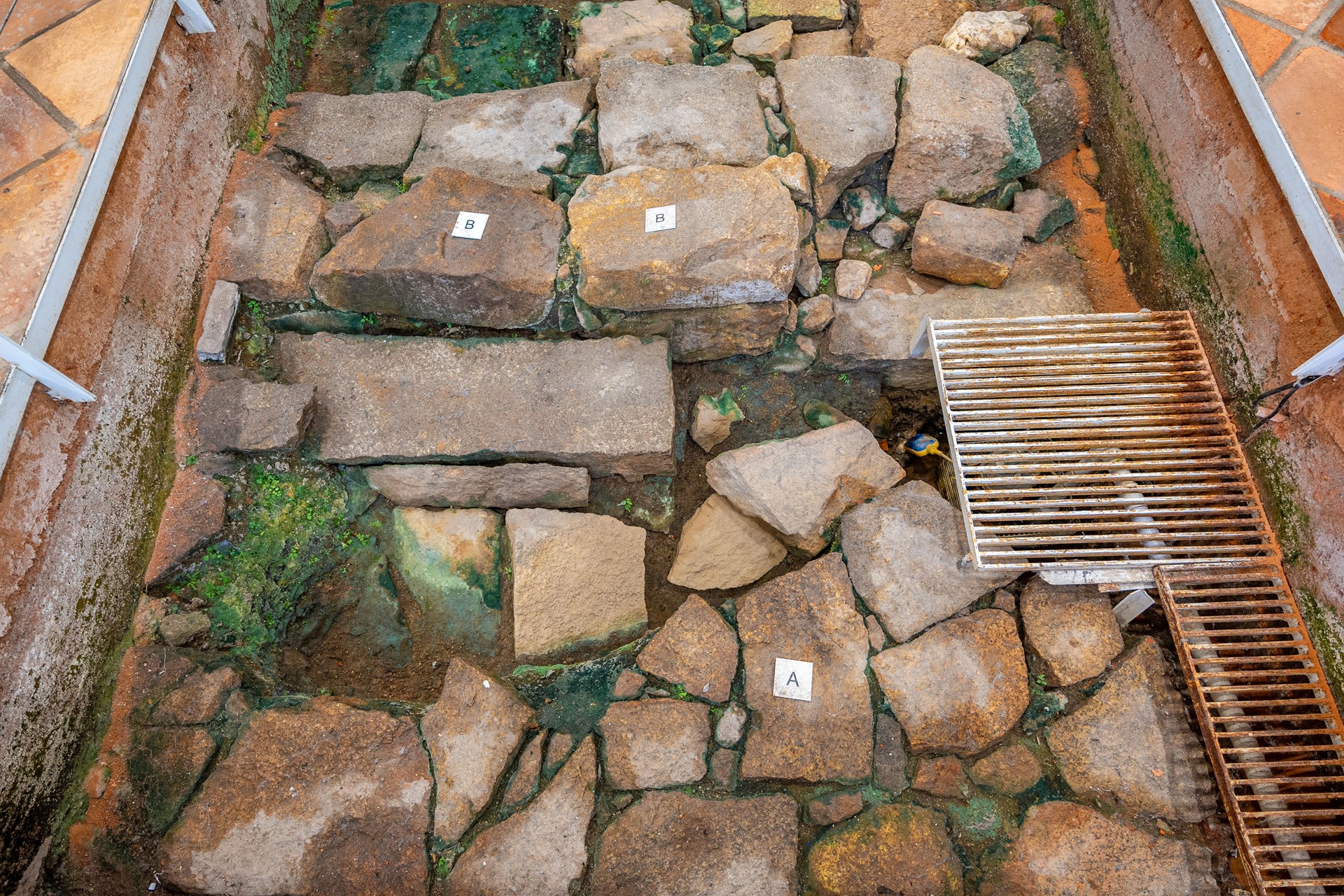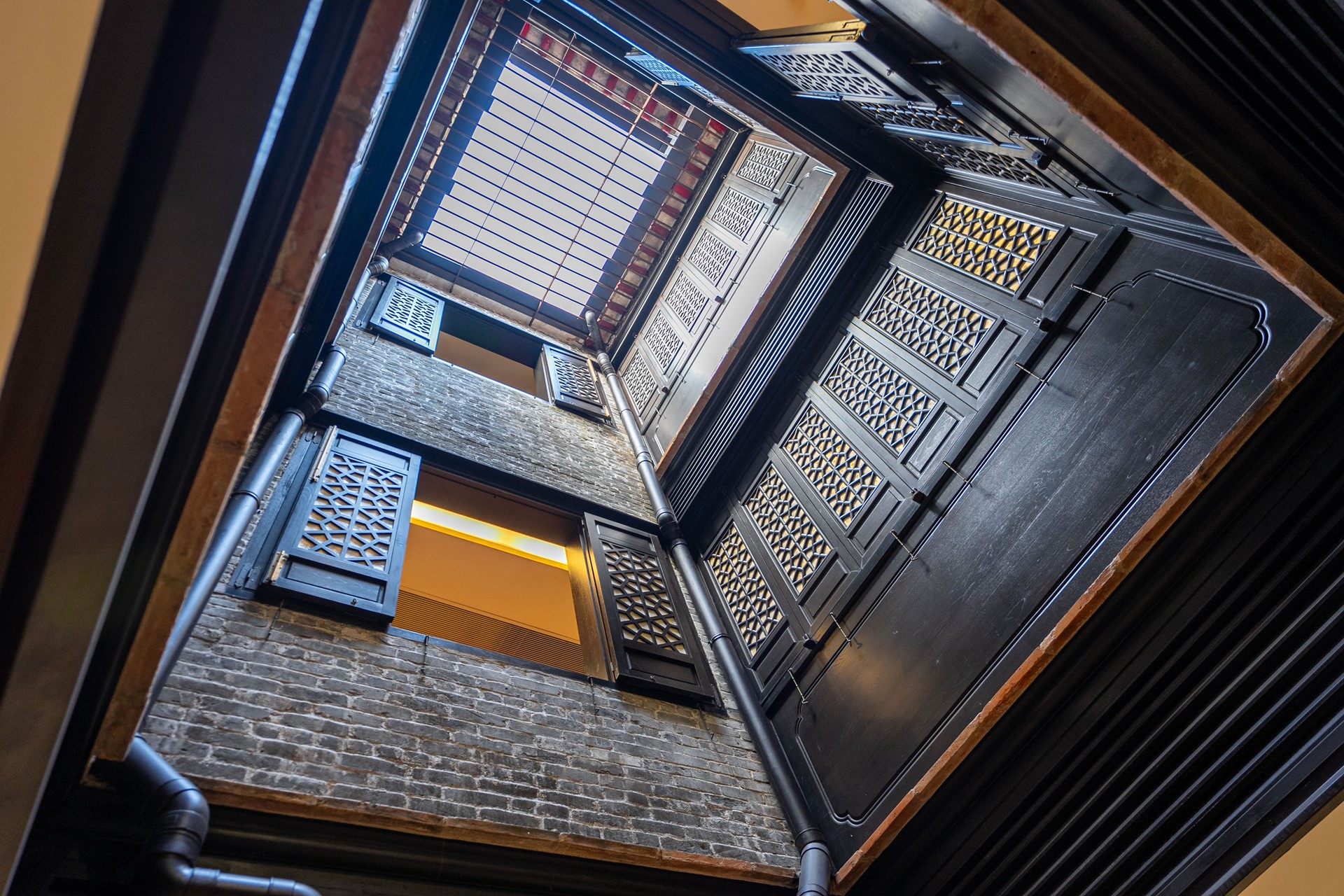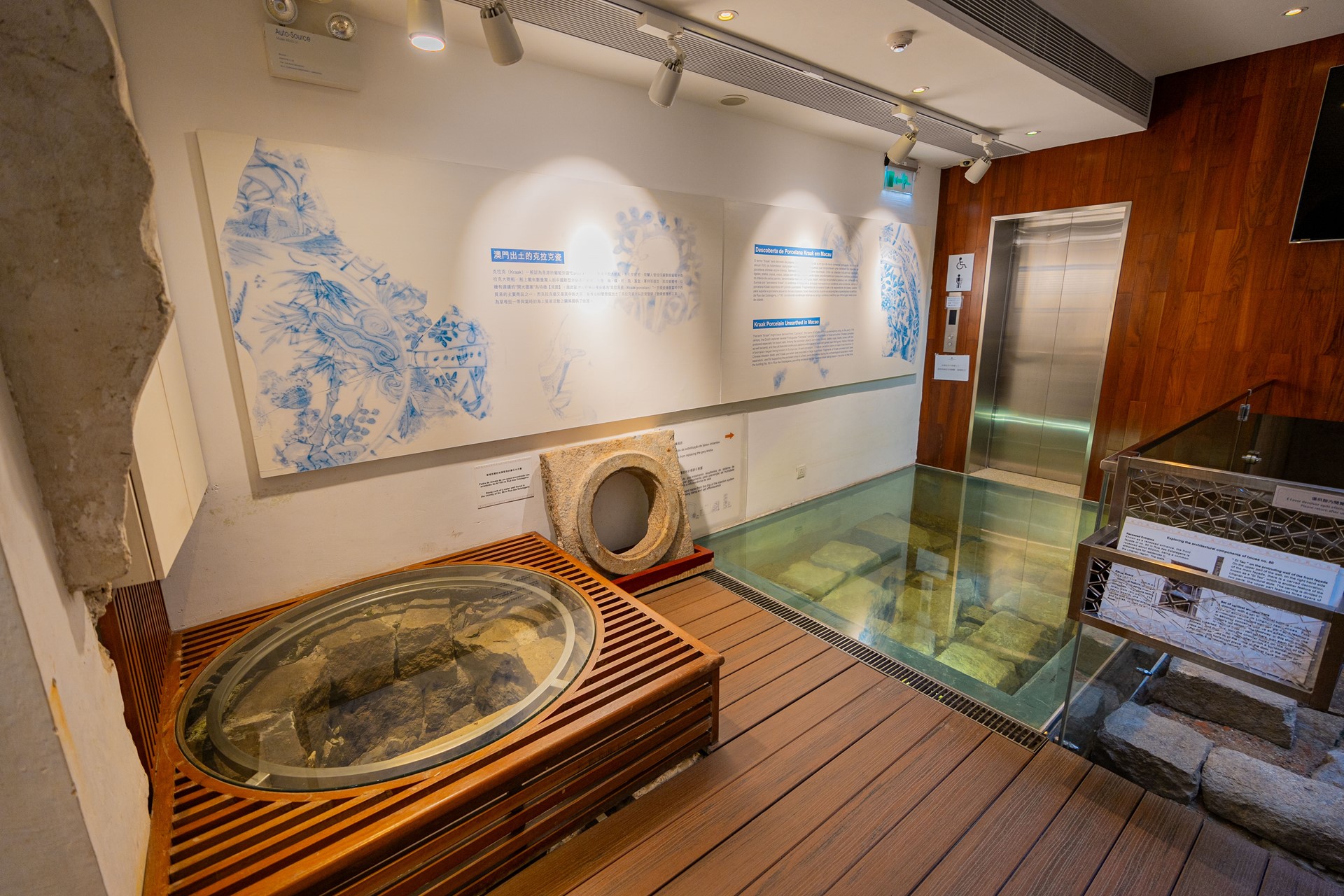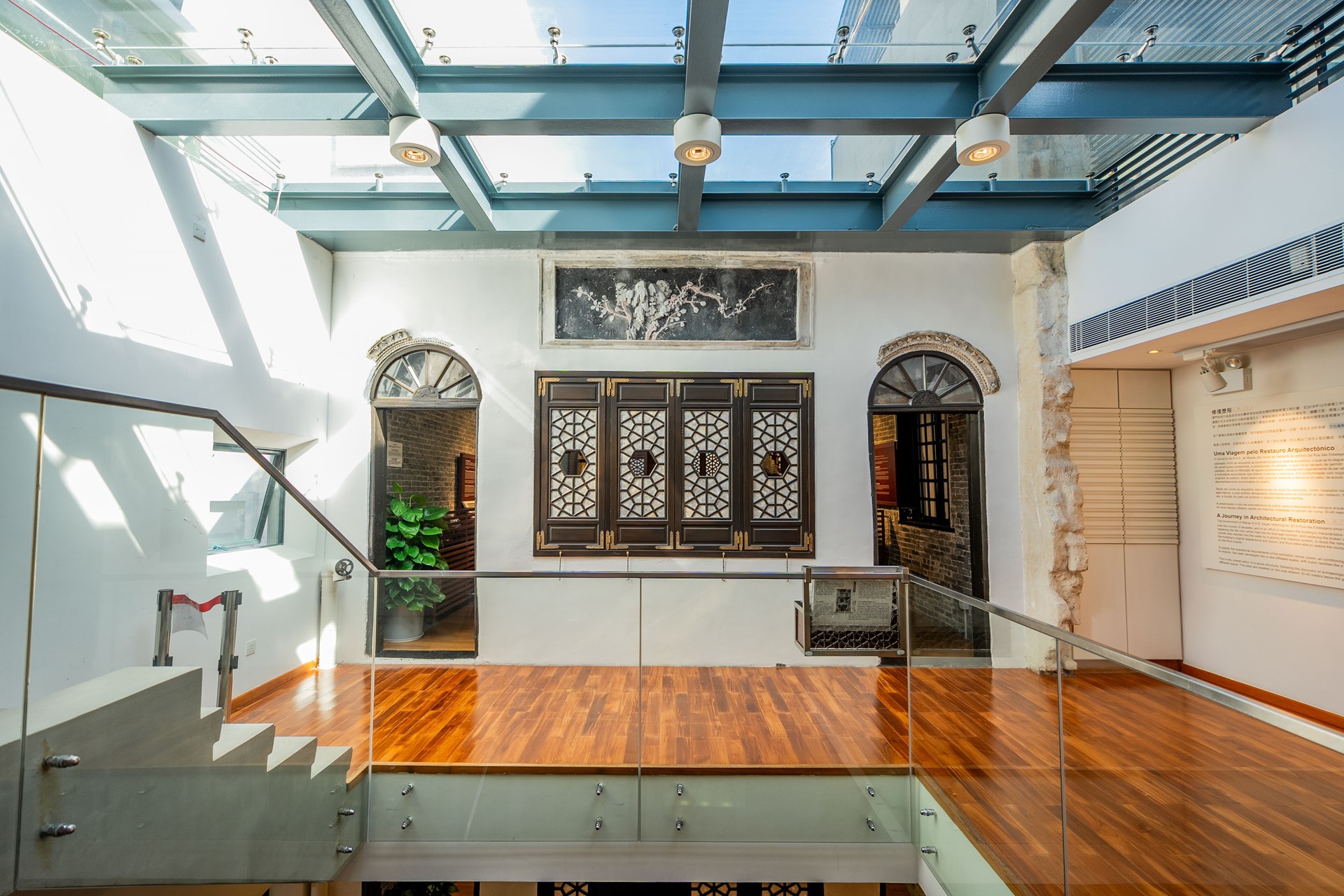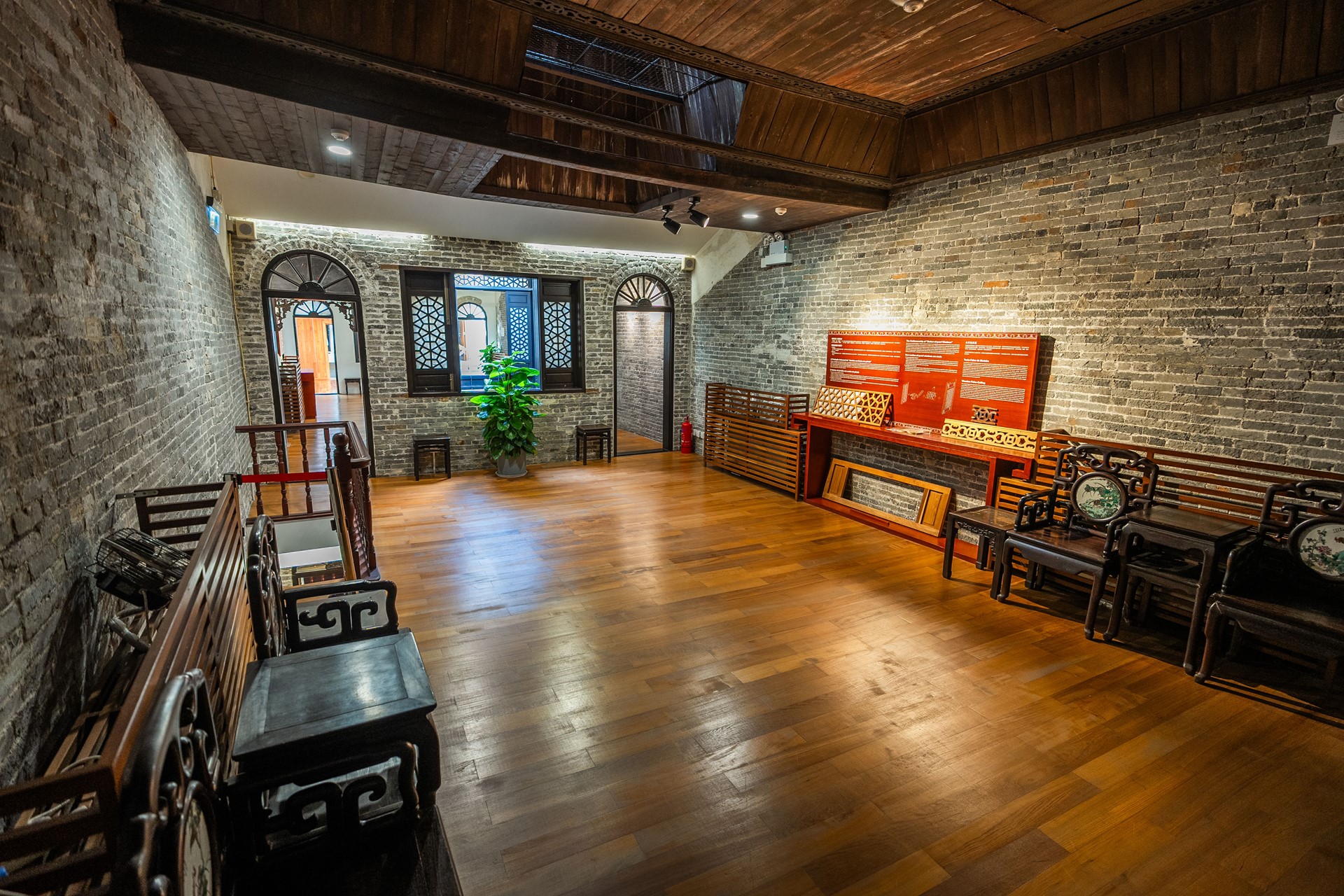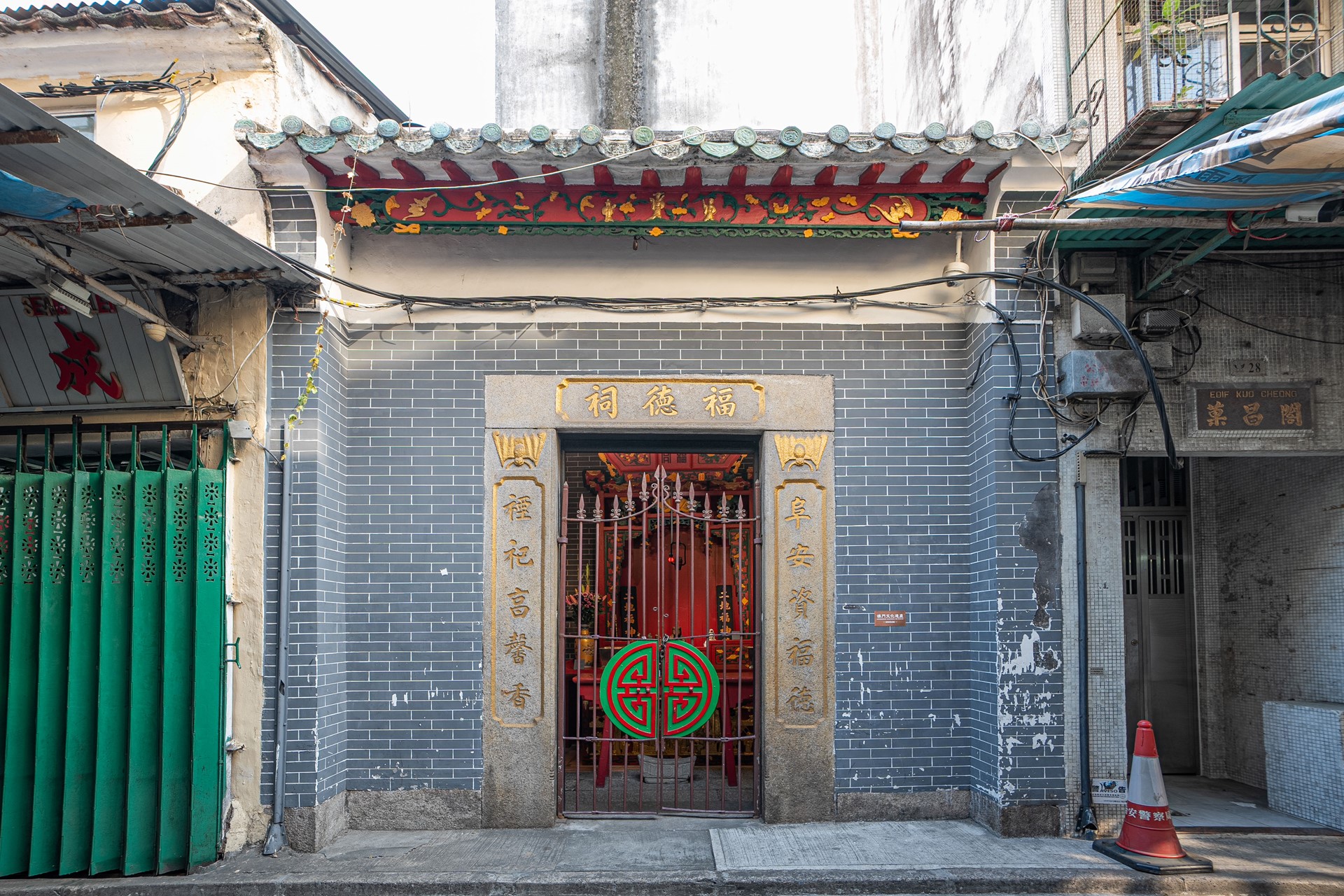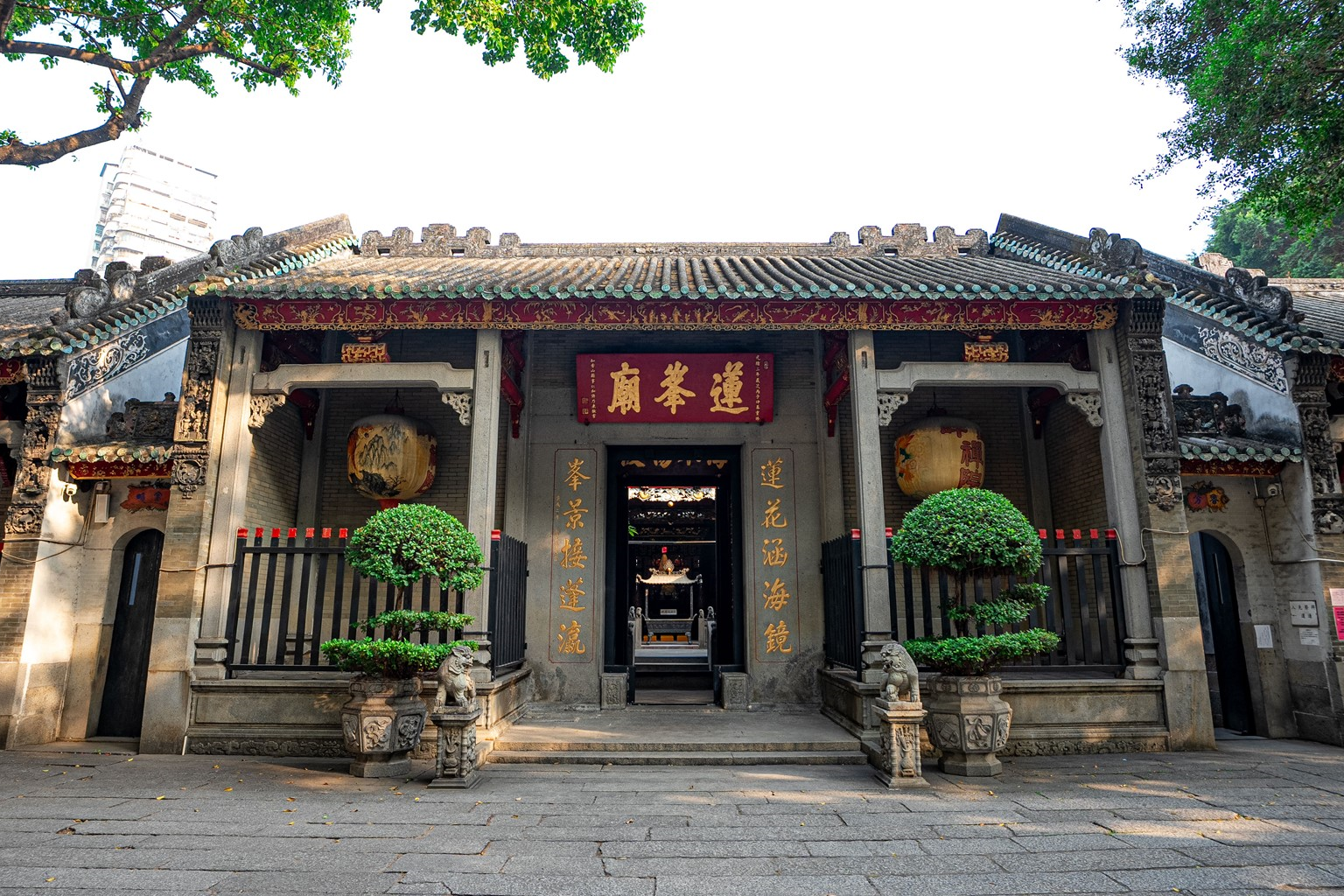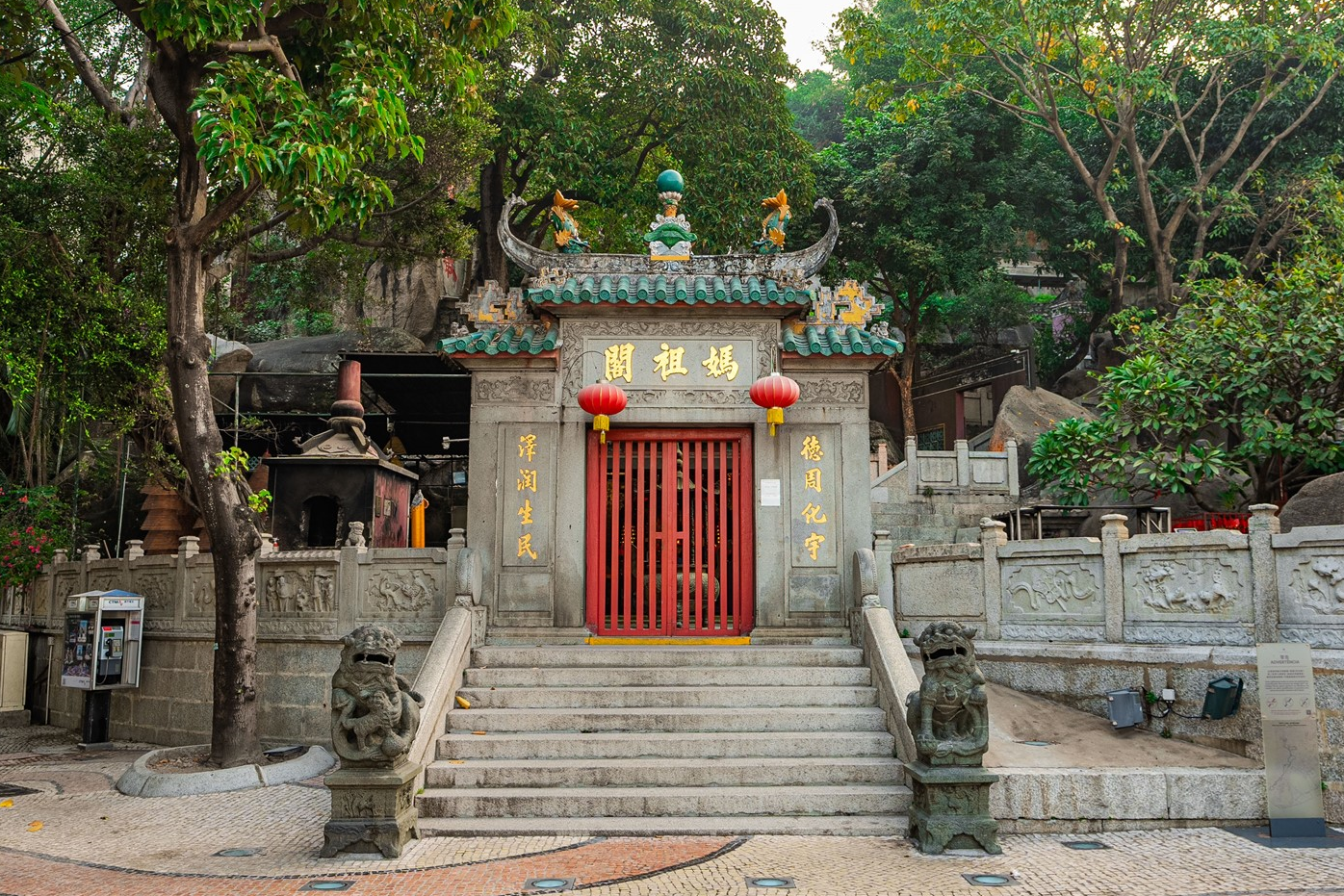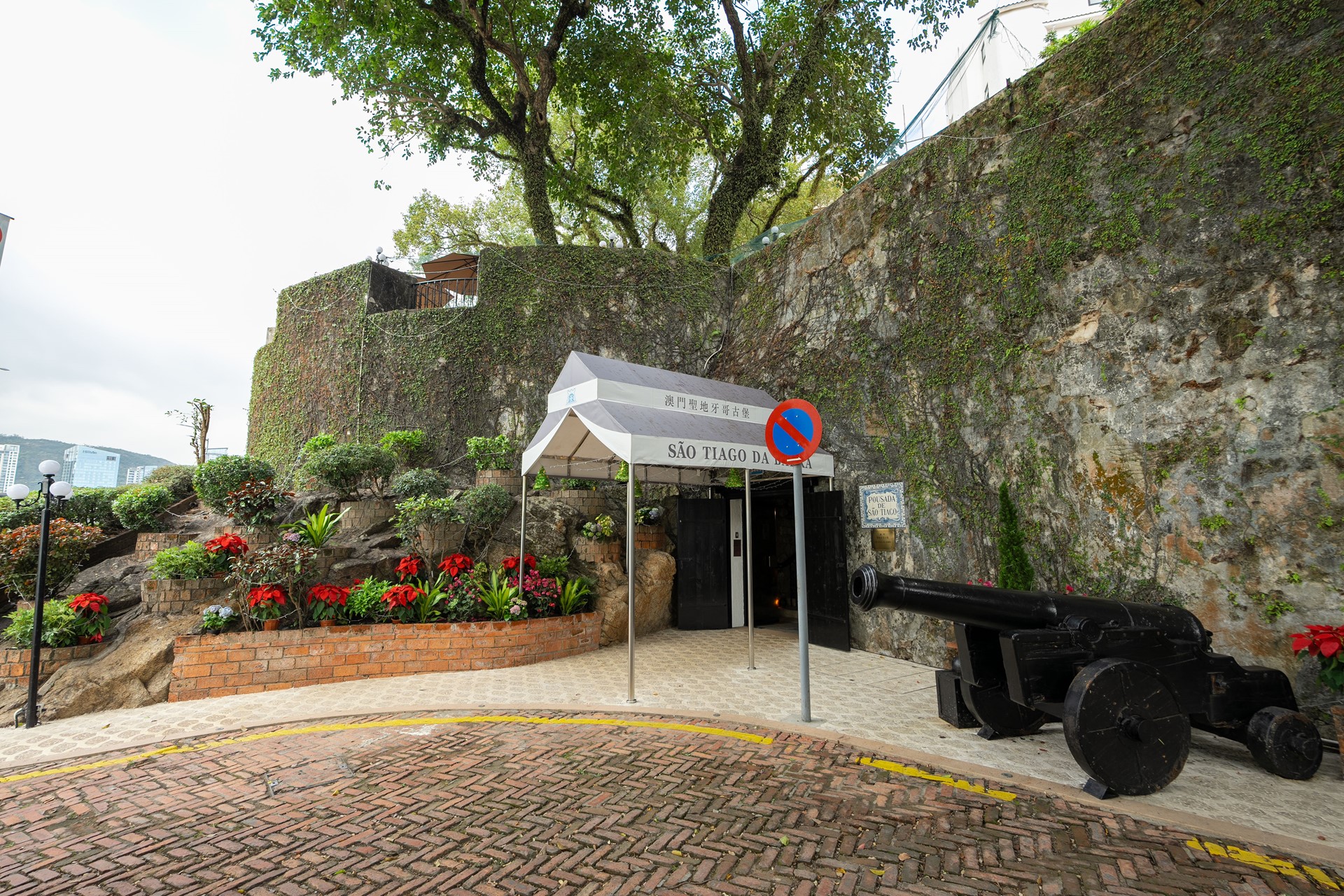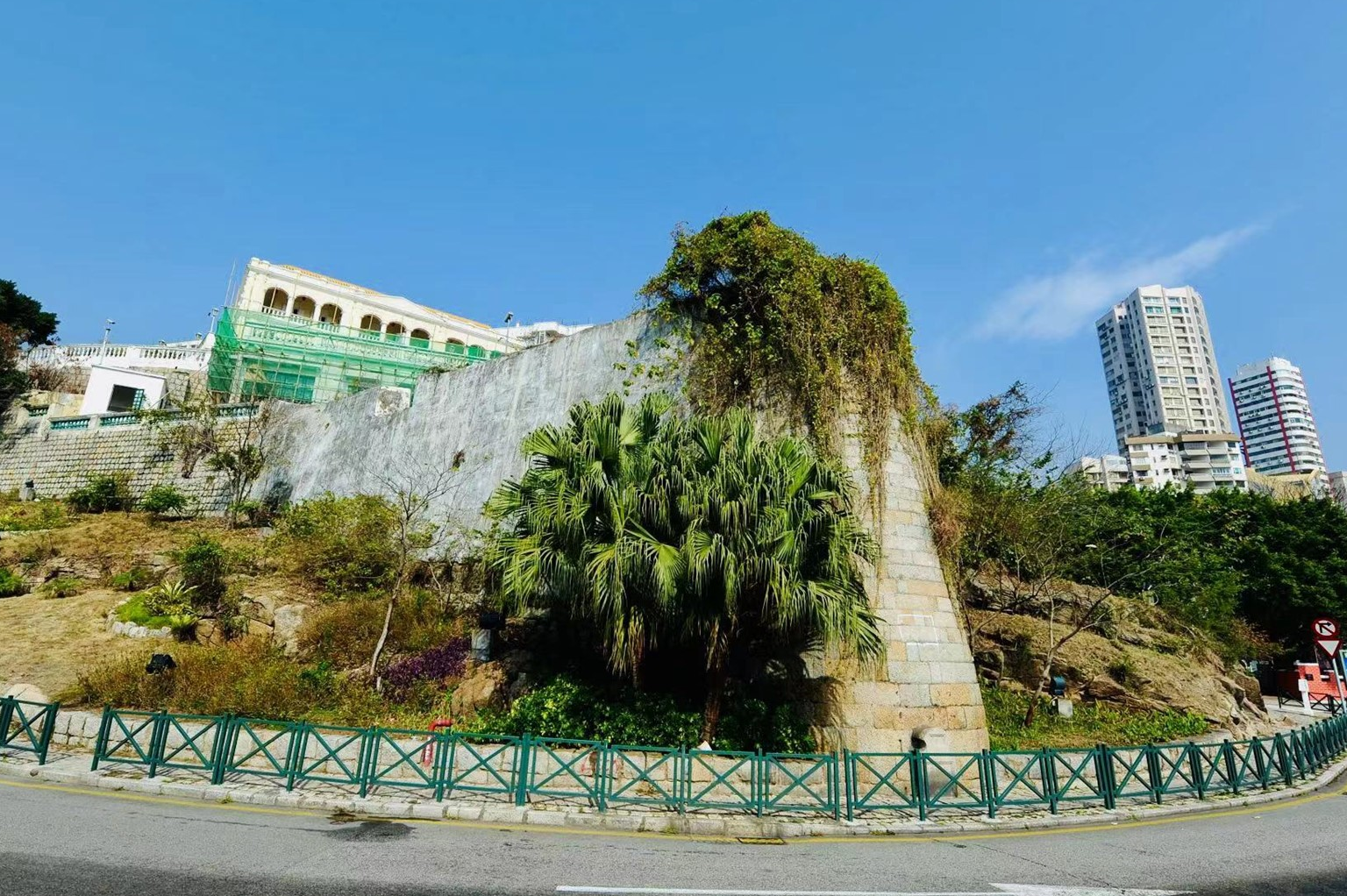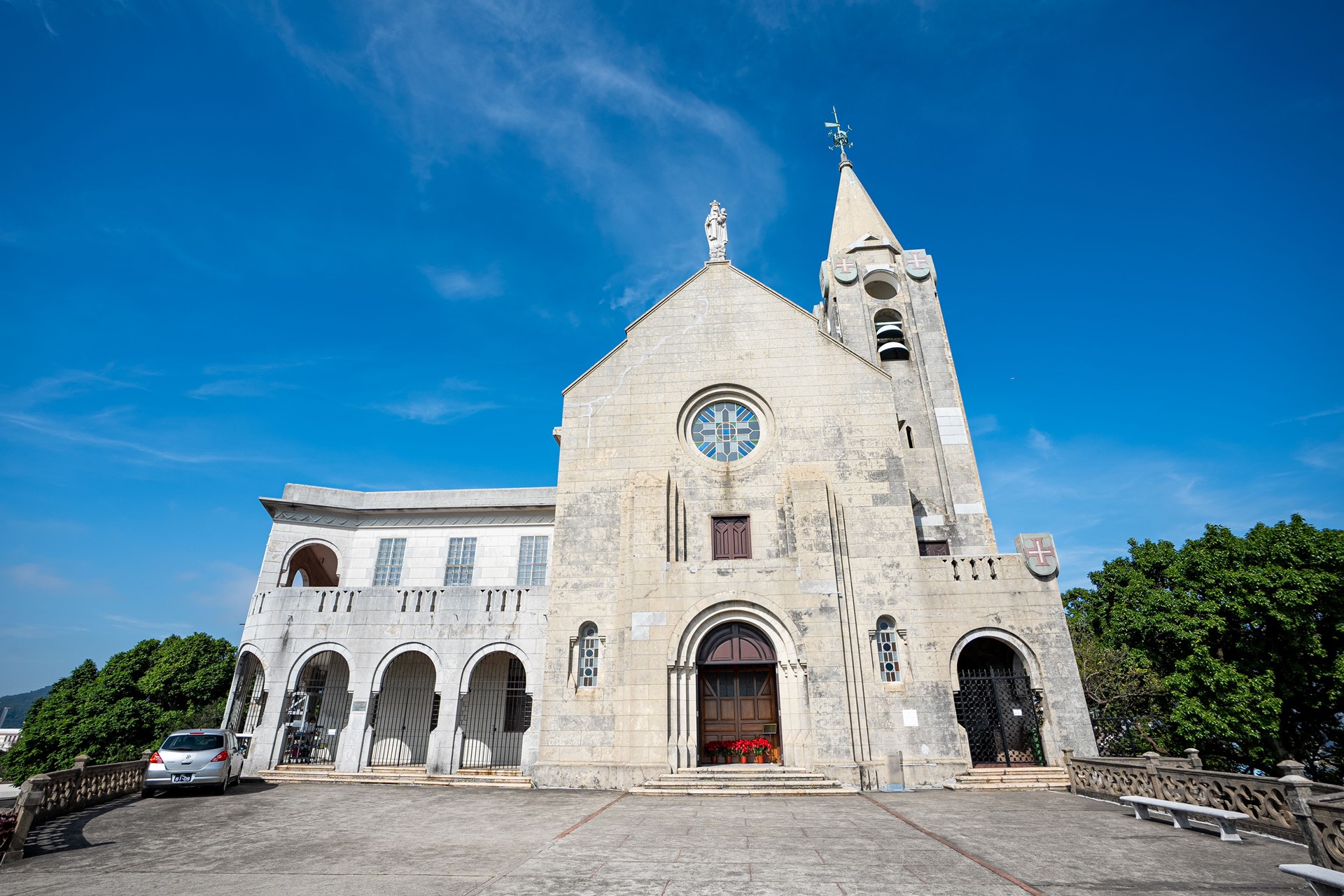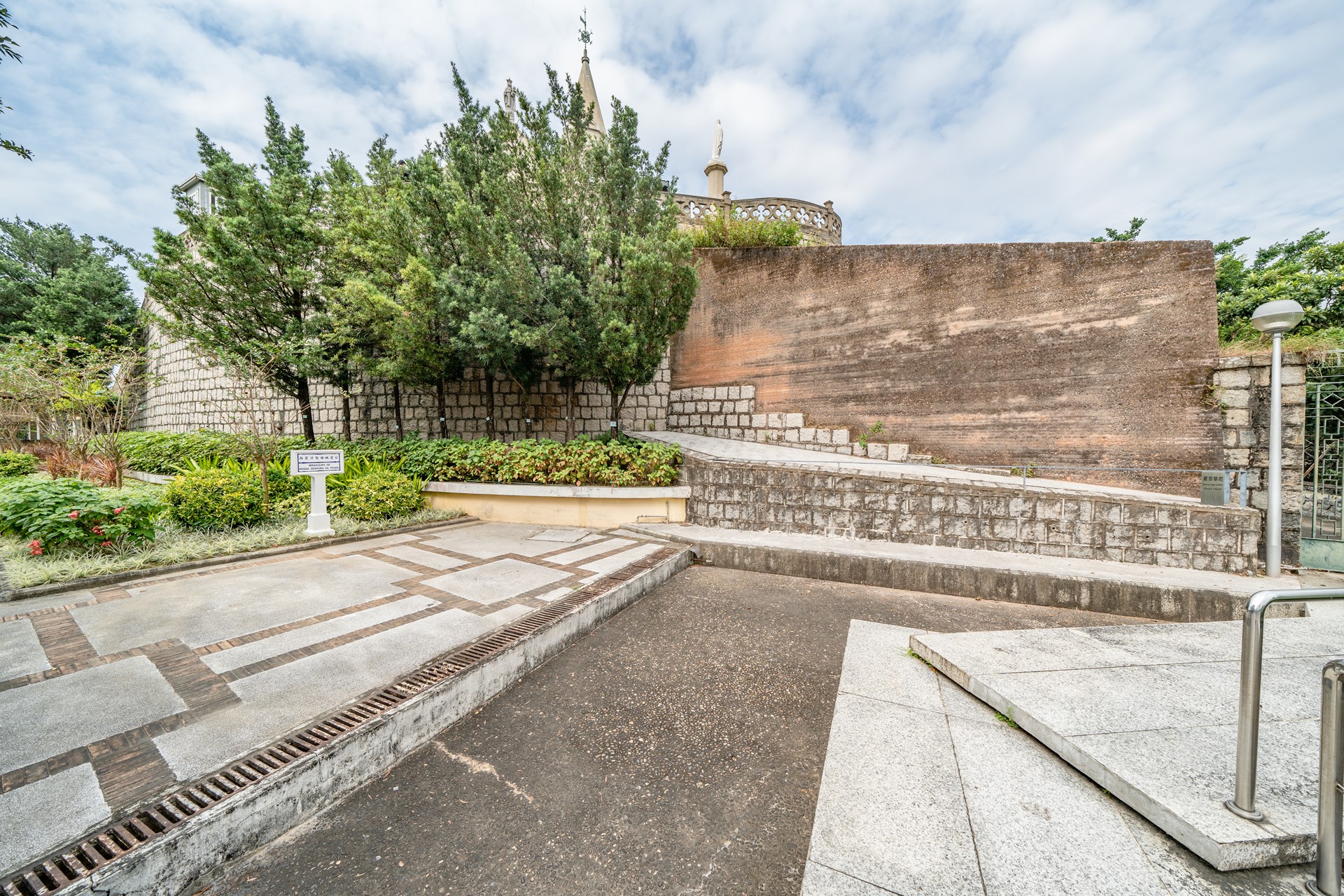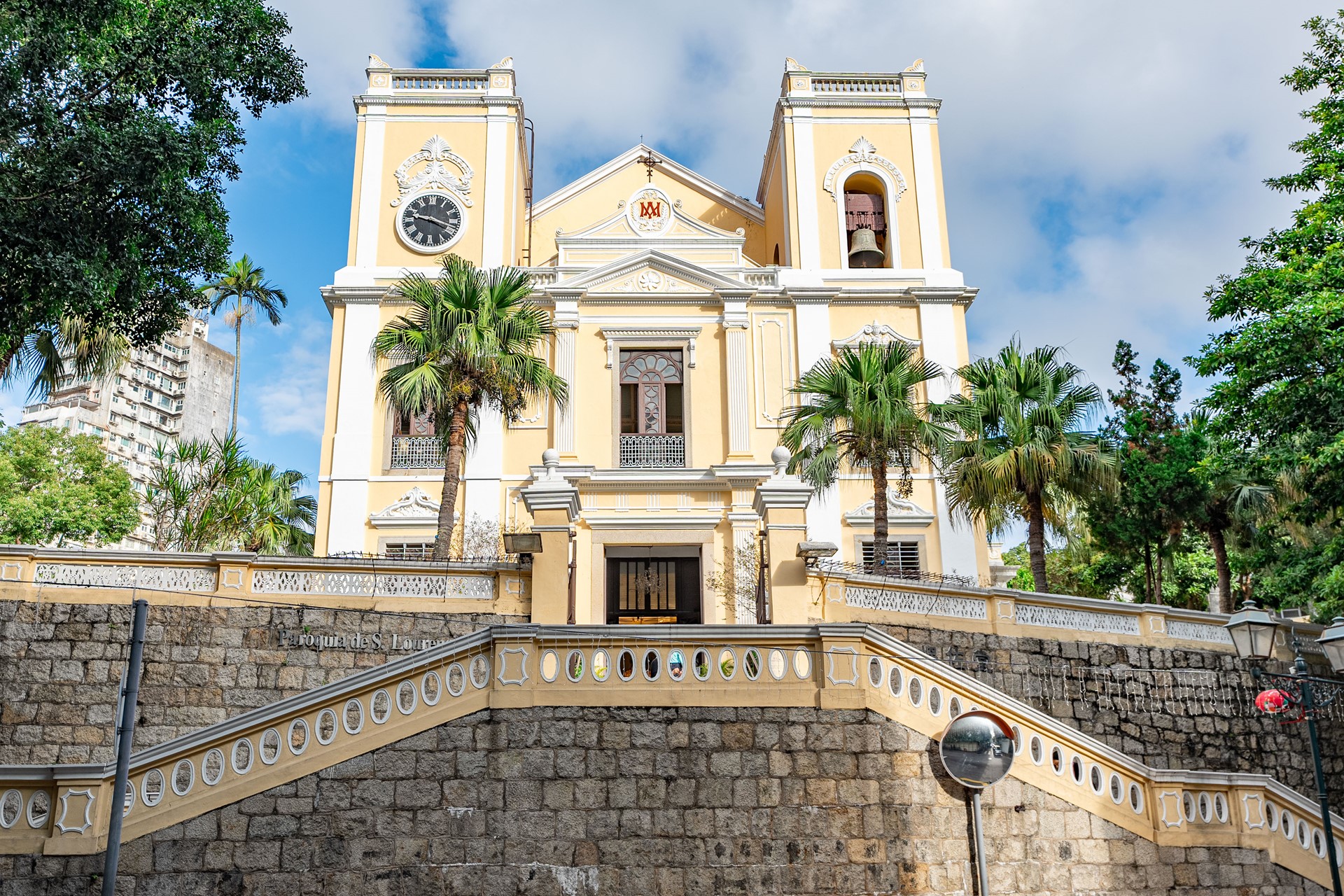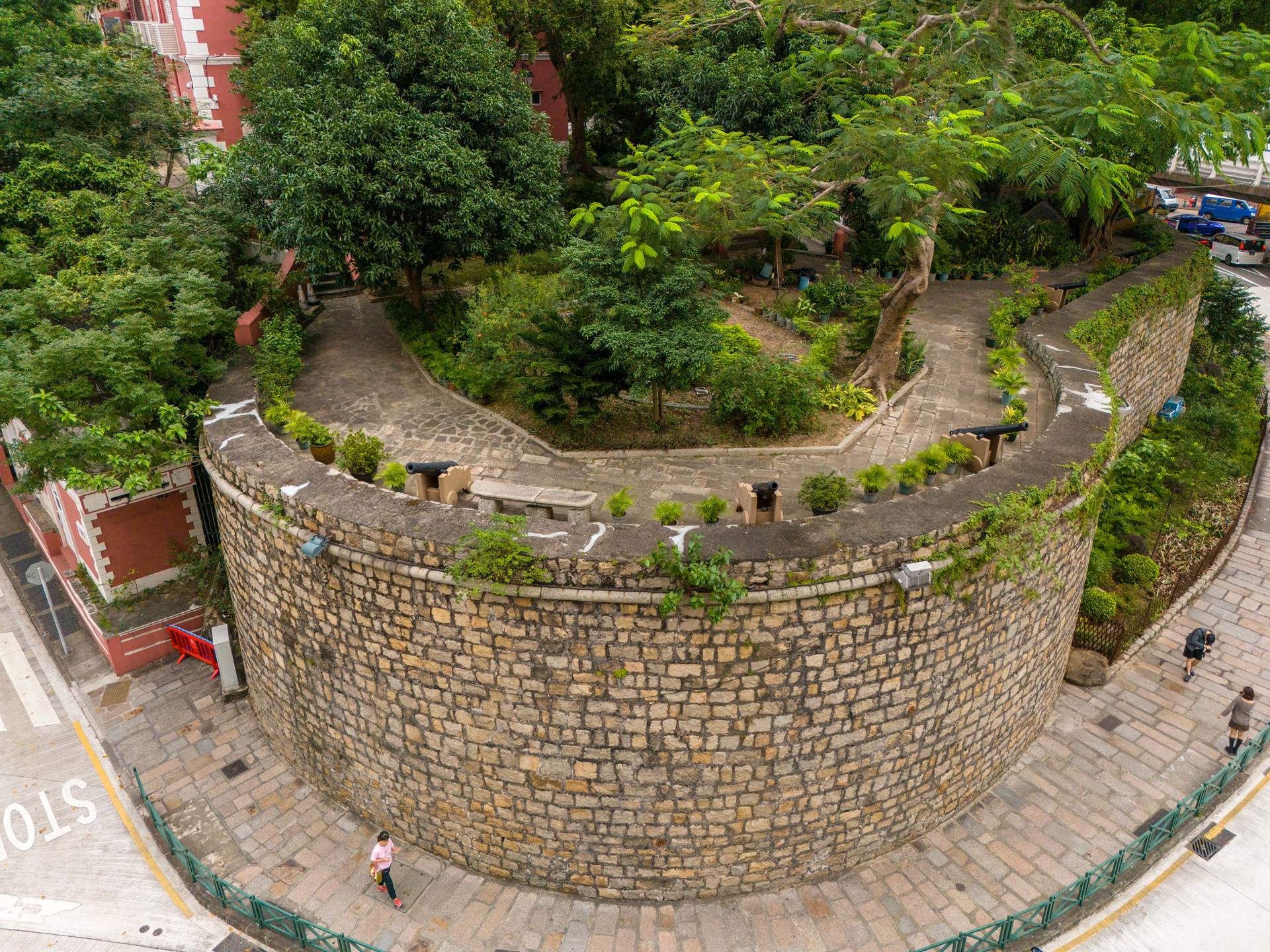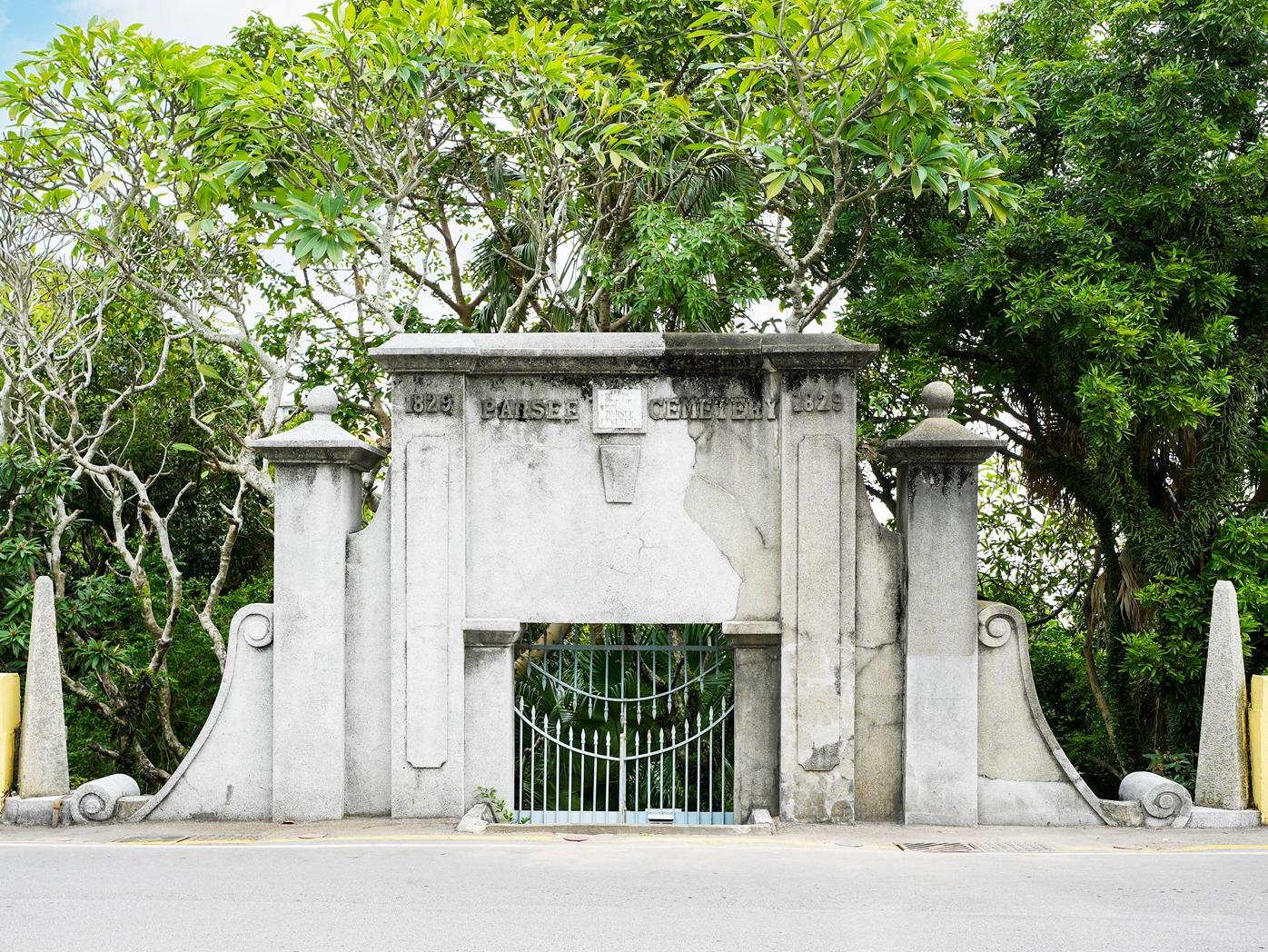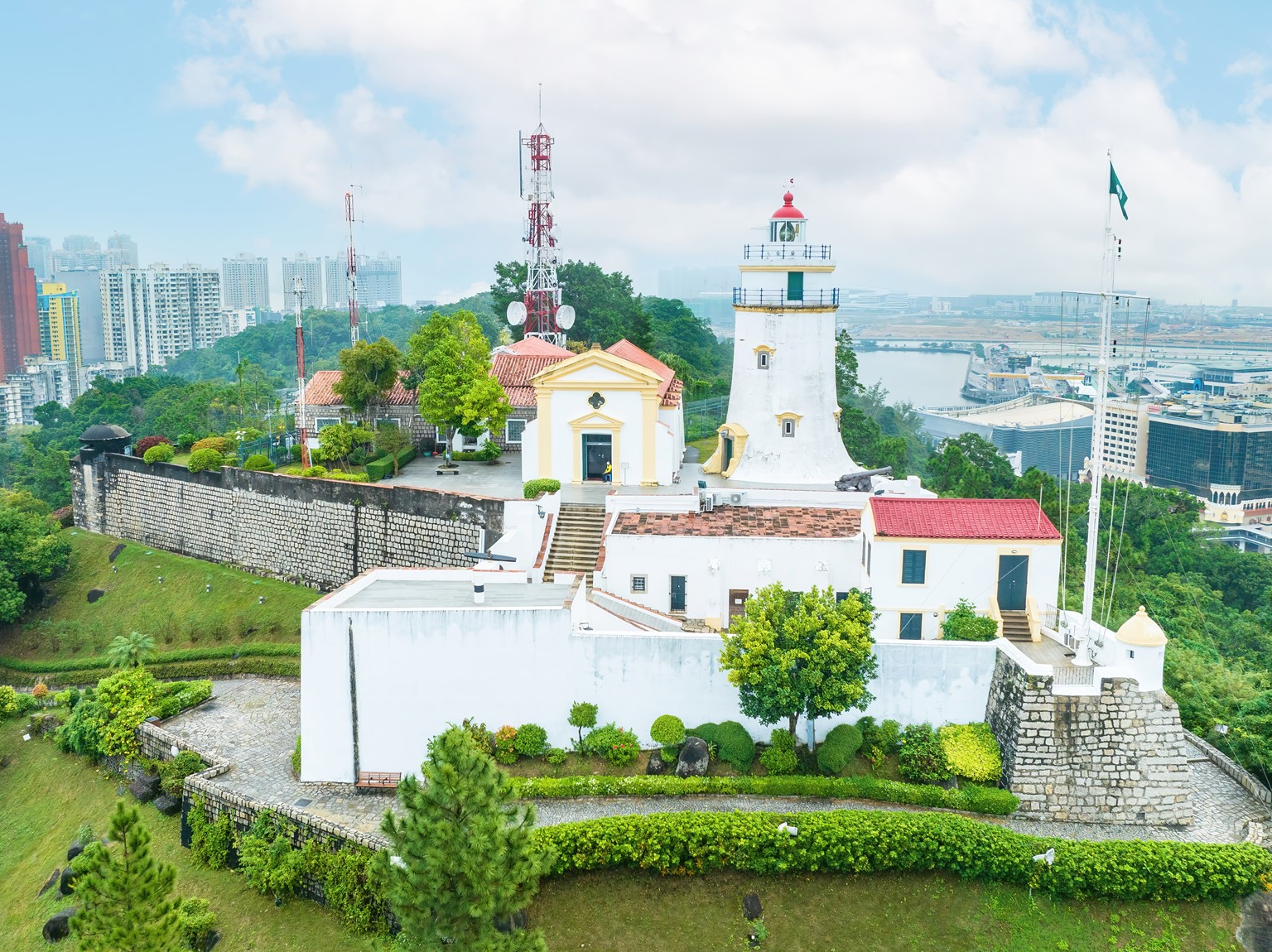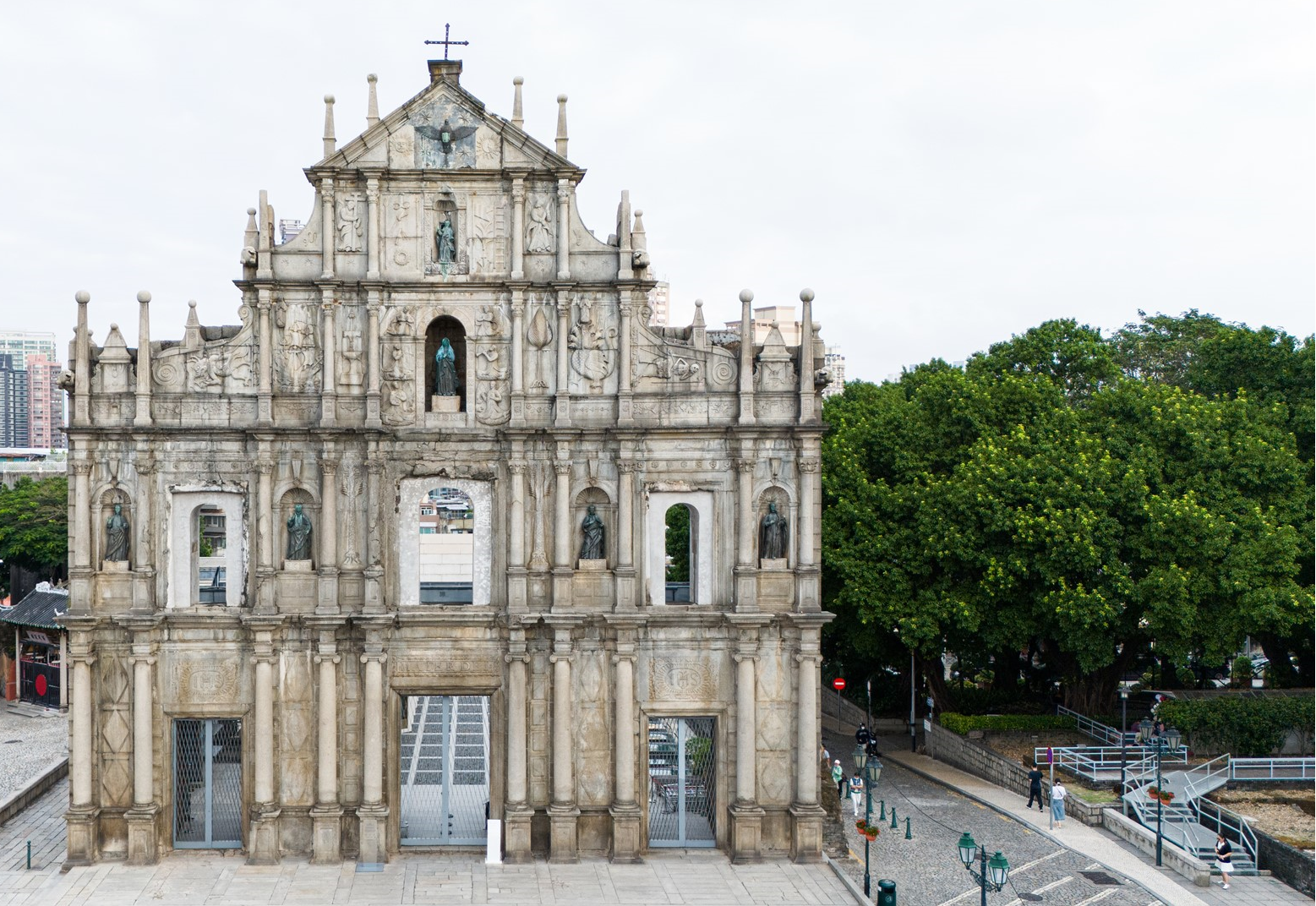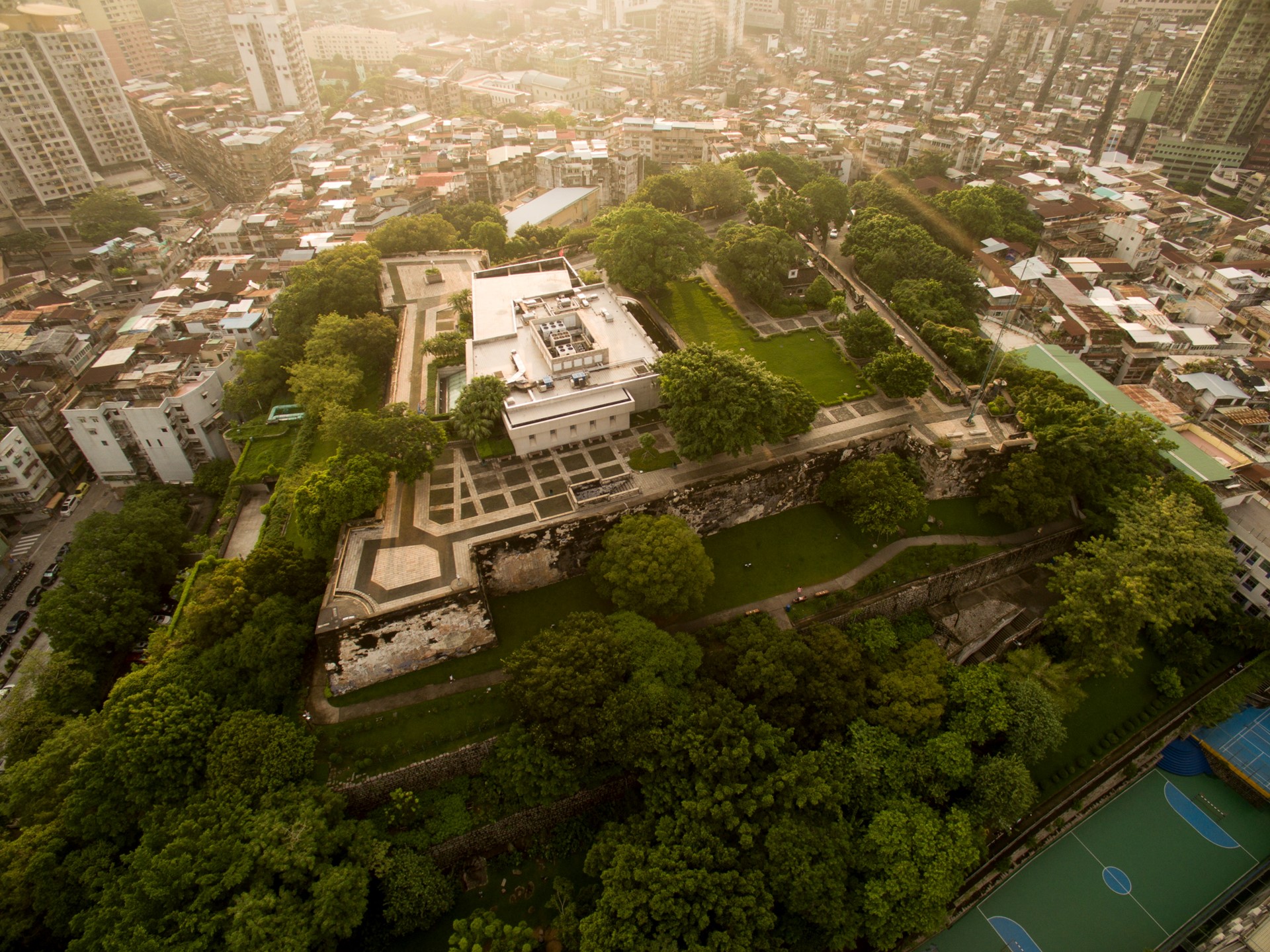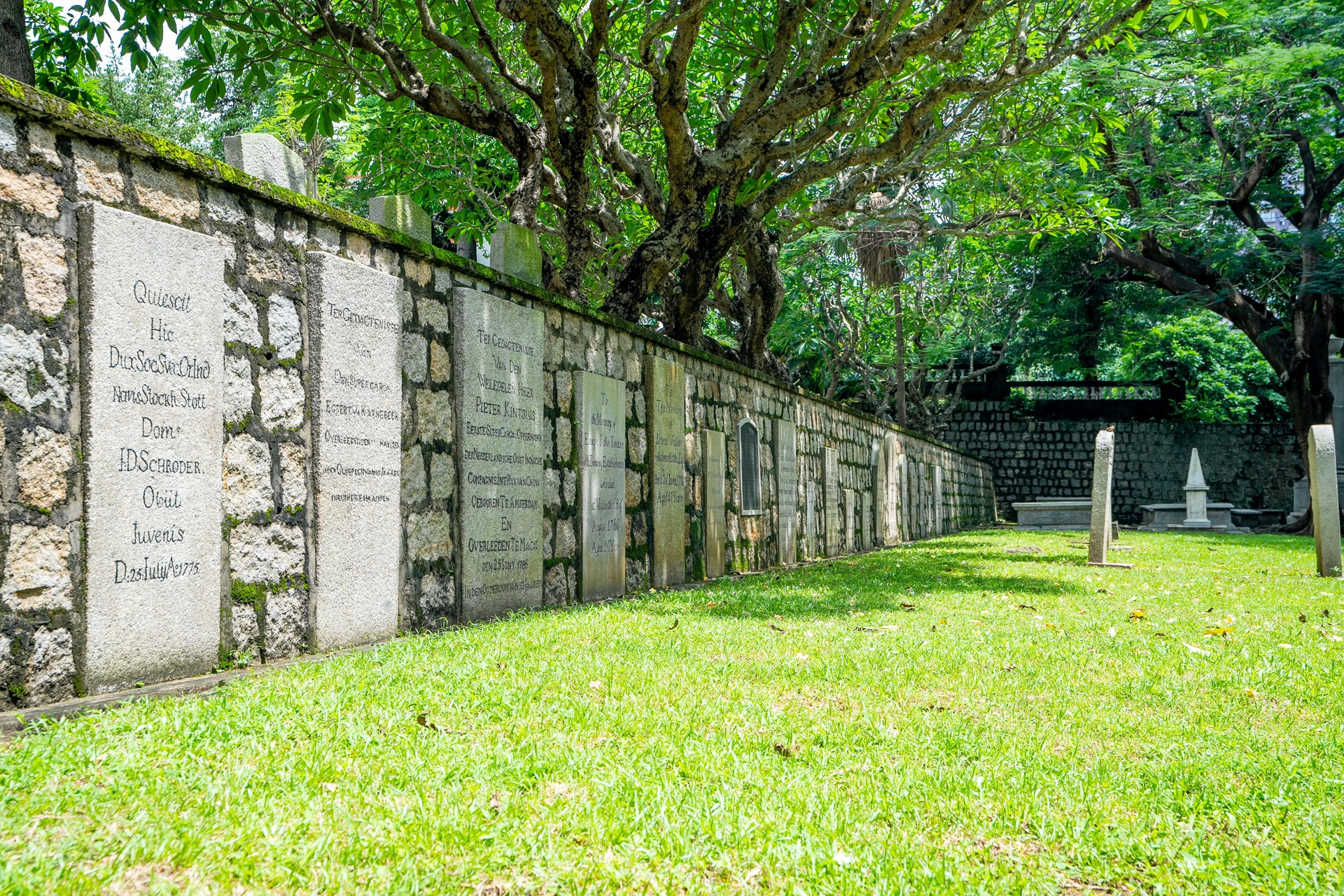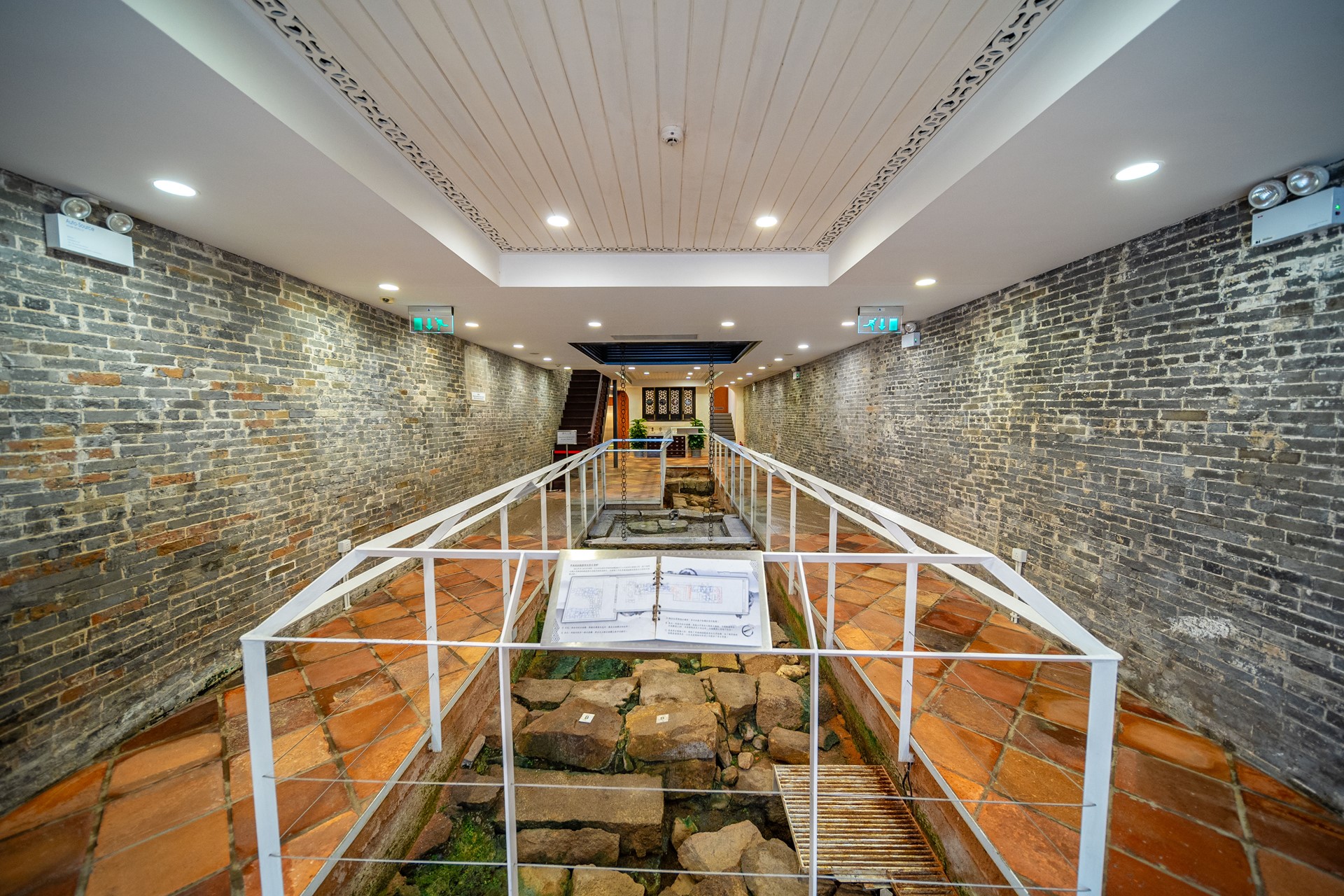In Rua das Estalagens no. 80 there is a brick-and-wood structure that was built in the late 19th century, presenting a narrow, long and deep layout. With an interior divided by patio(s) that forms several spaces, this is a typical Lingnan-style, three-storey “Bamboo Tube House” (traditional “shop-house”), with the ground floor serving as a shop and the upper level as a residence, with wooden louvered doors and windows on the middle and upper floors, underneath which is still possible to see the name of the old shop. The building was acquired by the Macao Government in order to enable restoration and revitalisation works, during which a large granite stone structure was discovered underground. Following preliminary evaluation, archaeological excavation was carried out. During the project, remains of an old stone pavement and a large stone structure dated to a period prior to the construction of the present building were found at the site. It was also unearthed disc separators for porcelain and Kraak porcelain fragments, which were produced for export in the late Ming and early Qing dynasties.
Located within Macao's former “North Bay”, Rua de Estalagens, together with Rua dos Mercadores, and Rua dos Ervanários, are known as the Three Streets (Sanjie), corresponding to the former central business district of Macao. Since the mid-16th century, with the intense sea trade that flourished from the Maritime Silk Road, Macao had its main piers concentrated in the Inner Harbour area, on the western limit of the peninsula, in which the old “North Bay” functioned as a former port that was very busy and prosperous. In the 17th century, Guanbu xingtai (the Macao Branch Office of Guangdong Customs) and the Damatou Taxation Office were installed here, to calculate and collect taxes from merchant ships. Since the mid-19th century, with the major land-reclamation works by the old Macao Portuguese administration, the coastline of the Inner Harbour shifted outward, and the former coastal “North Bay” became dry land.
After various experts’ research and analysis, the large stone structure discovered in Rua de Estalagens no. 80, is most likely a remnant of the former pier facilities that existed along the old “North Bay” coast, while the export Kraak porcelain unearthed at the site demonstrates Macao's role as an important export hub for Chinese ceramics. These findings provide important archaeological evidence for Macao's status as a transit port for trade along the Maritime Silk Road during the Ming and Qing dynasties.
In 1892, Dr. Sun Yat-Sen (1866-1925) who was recently graduated from the College of Medicine for Chinese in Hong Kong, and began to practice medicine in Macao, became the first Chinese doctor practicing Western medicine in the city at the time. In 1893, he opened the Chong Sai pharmacy in this location. Sun Yat-Sen worked as a doctor in Macao from the autumn of 1892 until September 1893, and therefore Rua das Estalagens no. 80 represents an important record of Dr. Sun's early career.
